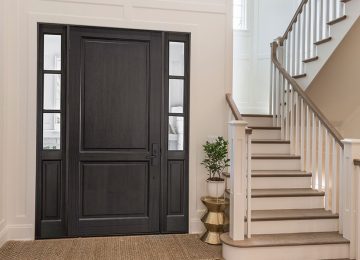In the world of fintech, user experience is often built for the demo.
Smooth animations. Trendy dashboards. Buzzwords like “intelligent automation” and “real-time insights” flood landing pages. The goal is to impress during a 30-second pitch.
But Sabeer Nelli, founder and CEO of Zil Money, builds for a different audience.
He builds for people who don’t have time to be impressed.
He builds for business owners who just want the job done—accurately, quickly, and without drama.
For them, technology isn’t a toy or a trend. It’s a tool. And the best tools don’t require a tutorial. They just work.
This is the design philosophy behind Zil Money—and the leadership insight that continues to set Sabeer apart: build for the doer, not the browser.
Understanding the Business Owner’s Reality
Sabeer didn’t learn this from a UX workshop or a product playbook. He learned it behind the counter of a gas station, managing daily operations at Tyler Petroleum.
There, he saw the gap between what software claimed to solve and what it actually delivered.
- Financial platforms that made simple tasks harder
- Banking portals that buried key features under layers of navigation
- Tools that looked good but didn’t handle edge cases or exceptions
As a small business operator, he didn’t have time to “explore” features. He needed results—fast and frictionless.
That frustration became fuel. And when he founded Zil Money, he set one rule from the beginning:
“If it takes more than a minute to figure out, we built it wrong.”
The Product Philosophy: Shorten the Distance Between Intention and Outcome
At Zil Money, product decisions are shaped by one guiding idea:
The shorter the distance between what the user wants to do and what they see on screen, the better the experience.
This means:
- No buried menus
- No jargon
- No onboarding hoops
- No complex setup
- No unnecessary notifications
Whether it’s printing a check, sending a wire, scheduling payroll, or integrating with a bank account, the platform aims to take users from intention to outcome as fast—and clearly—as possible.
That’s not just user-centered design. That’s doer-centered design.
Takeaway: Design for completion, not exploration.
How This Philosophy Shows Up in Zil Money
Let’s look at how this principle shapes specific features in Zil Money:
✅ Check Printing from Any Device
No special printers. No software installations. If you can print a Word doc, you can print a check. That simplicity has made Zil Money the leader in online check printing.
✅ Unified Dashboard for All Payments
Instead of toggling between ACH, wires, or eChecks, users choose the method from one screen. No tab overload. Just one clear payment rail that fits their cash flow.
✅ Payroll by Credit Card
A lifesaver for business owners with limited cash but available credit. It’s one of those features built not for flash—but for actual operational relief.
✅ One-Click Integrations with QuickBooks, Xero, and Banks
No developer required. The system pulls and reconciles data without disrupting workflows.
Each of these features was designed not to impress—but to serve.
And that’s what makes Zil Money stick. It’s not trying to “delight” users with style. It’s helping them move through their day faster, smoother, and with less stress.
Takeaway: The best software feature is the one that lets users close the tab sooner.
What Designers and Founders Can Learn from Sabeer’s Approach
If you’re building any product—especially one for business owners—here are some practical takeaways from Sabeer Nelli’s design philosophy:
💡 1. Respect the User’s Time
Your user isn’t bored. They’re busy. Every extra click, pop-up, or tutorial is a small tax on their productivity. Eliminate it.
💡 2. Simplify, Then Simplify Again
Once a feature is built, test if it can be done in fewer steps. Then test again. Zil Money’s workflows go through this process rigorously.
💡 3. Remove the Learning Curve
Don’t build software that users have to learn. Build software that adapts to how they already think. Use common patterns, real-world language, and clean defaults.
💡 4. Make Support Easy to Reach
If something goes wrong, don’t bury the solution behind ticket portals. Zil Money offers real-time support because the doer doesn’t have time to wait.
💡 5. Don’t Design for Applause
It’s tempting to launch features that generate buzz. But Sabeer’s strategy is simple: design for the customer who logs in at 6 a.m. and needs to get payroll done by 6:15.
The Silent Power of Operational Software
Zil Money isn’t loud. It doesn’t try to dazzle. It doesn’t gamify your dashboard.
And that’s the point.
The product works like a good assistant: quiet, competent, and always ready.
This subtlety is powerful. Because once a business owner finds a tool they don’t have to think about, they stick with it.
- They recommend it.
- They rely on it.
- They trust it.
In a space crowded with “clever” fintechs, Zil Money wins by being clear.
That clarity—engineered through thoughtful leadership and user-first product culture—is the real moat.
Takeaway: Flash attracts users. Function keeps them.
Conclusion: Build for the Person With Five Minutes and a Deadline
Sabeer Nelli didn’t build Zil Money for people browsing on a weekend. He built it for the person paying bills between meetings. The owner running payroll from a gas station back office. The entrepreneur printing checks while juggling orders, customers, and suppliers.
He built for the doer.
That’s why Zil Money doesn’t feel like software. It feels like relief.
And that’s the legacy of Sabeer’s design philosophy—products that respect the user’s time, adapt to their reality, and help them move forward without friction.
So if you’re building something of your own, ask yourself:
- Am I designing for show, or for speed?
- Am I building workflows, or just features?
- Am I solving problems, or creating more places to click?
Because the user who chooses your product isn’t looking for the most beautiful interface.
They’re looking for the tool that gets out of the way and lets them get back to business.
And if you can build that—like Sabeer Nelli did—you won’t need to impress anyone. Your product will do the work.











